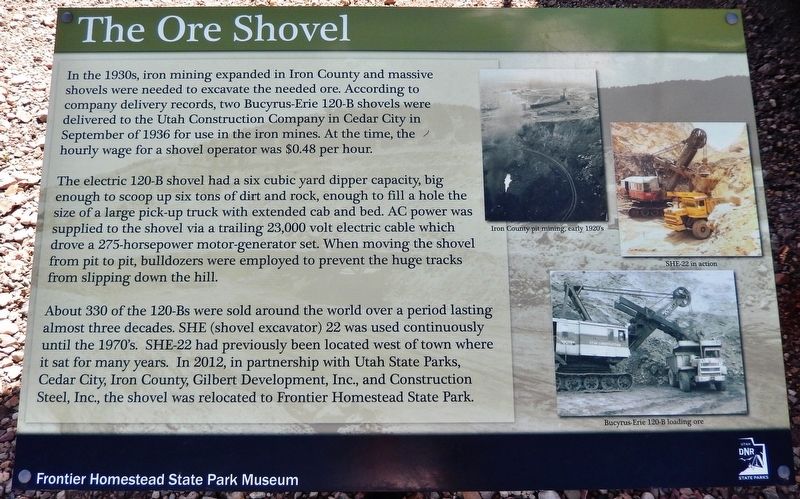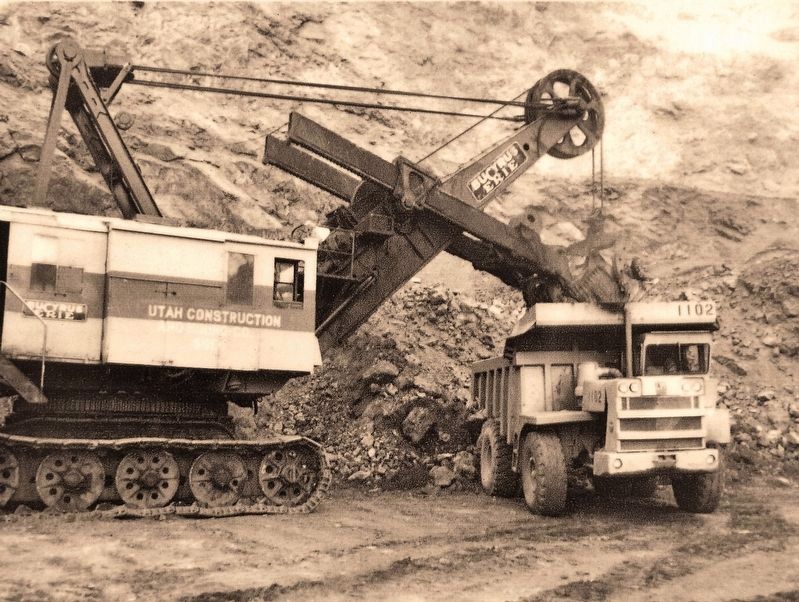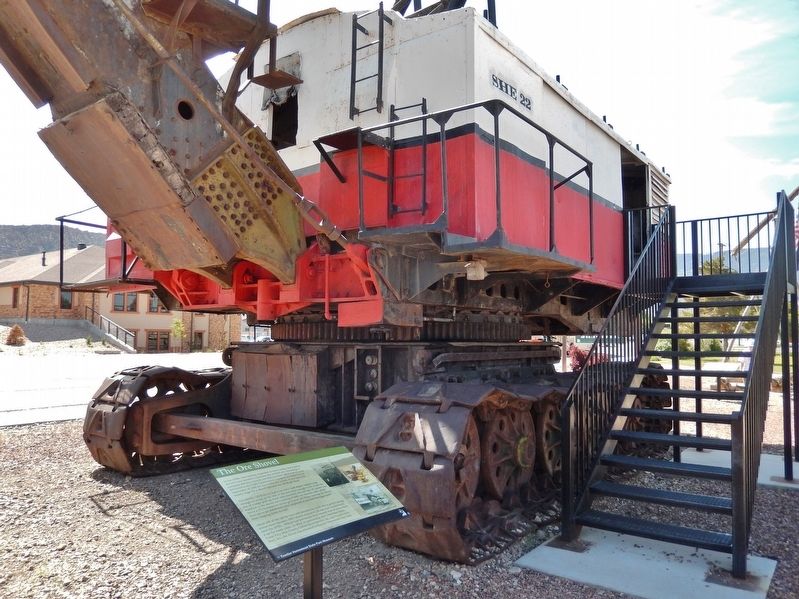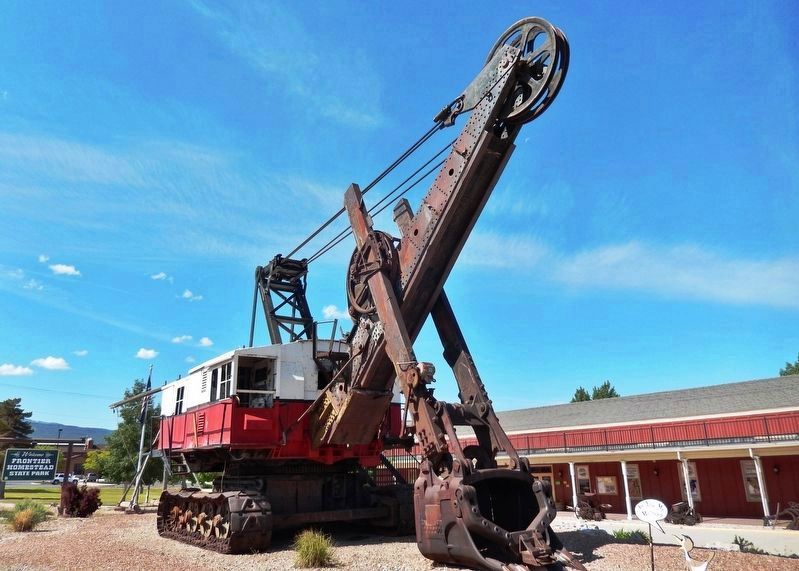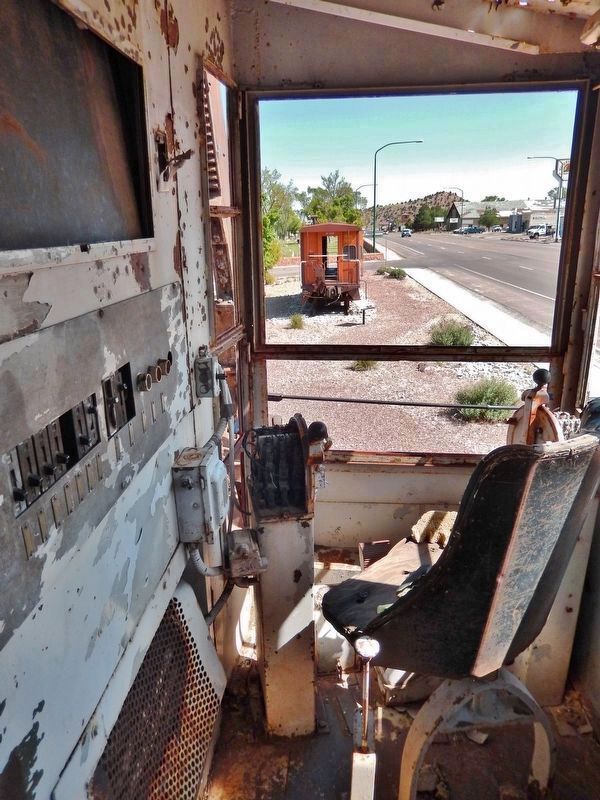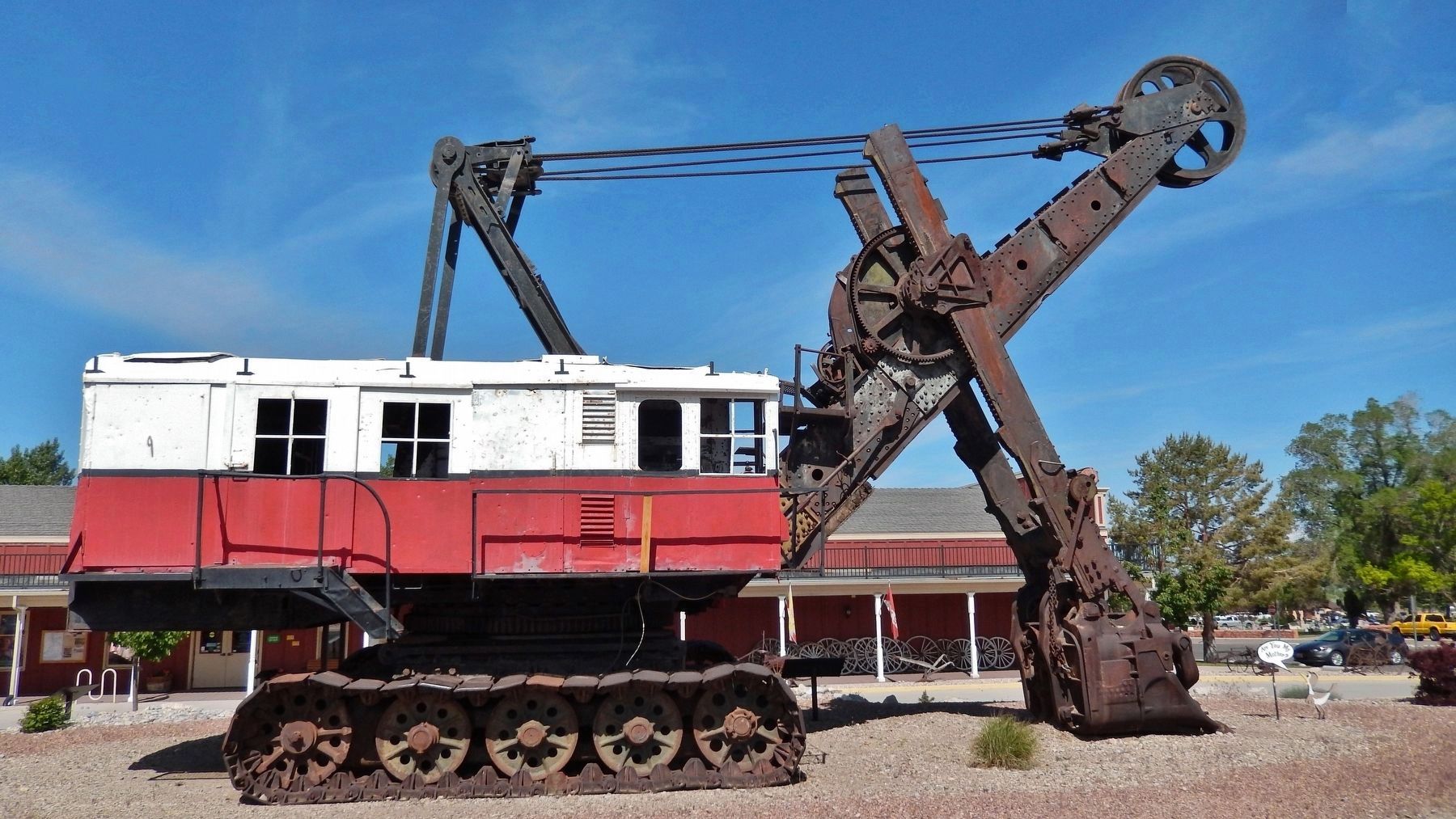Cedar City in Iron County, Utah — The American Mountains (Southwest)
The Ore Shovel
The electric 120-B shovel had a six cubic yard dipper capacity, big enough to scoop up six tons of dirt and rock, enough to fill a hole the size of a large pick-up truck with extended cab and bed. AC power was supplied to the shovel via a trailing 23,000 volt electric cable which drove a 275-horsepower motor-generator set. When moving the shovel from pit to pit, bulldozers were employed to prevent the huge tracks from slipping down the hill.
About 330 of the 120-Bs were sold around the world over a period lasting almost three decades. SHE (shovel excavator) 22 was used continuously until the 1970's. SHE-22 had previously been located west of town where it sat for many years. In 2012, in partnership with Utah State Parks, Cedar City, Iron County, Gilbert Development, Inc., and Construction Steel, Inc., the shovel was relocated to Frontier Homestead State Park.
(photo captions)
• Iron County pit mining, early 1920's
• SHE-22 in action
• Bucyrus-Erie 120-B loading ore
Erected by Frontier Homestead State Park Museum.
Topics. This historical marker is listed in this topic list: Industry & Commerce. A significant historical year for this entry is 1936.
Location. 37° 41.323′ N, 113° 3.732′ W. Marker is in Cedar City, Utah, in Iron County. Marker is on North Main Street (Utah Route 130) south of Iron Mission Parkway (West 685 North), on the right when traveling south. Marker is located within Frontier Homestead State Park, overlooking the giant Ore Shovel exhibit, near the museum front entrance on North Main Street. Touch for map. Marker is at or near this postal address: 635 North Main Street, Cedar City UT 84721, United States of America. Touch for directions.
Other nearby markers. At least 8 other markers are within walking distance of this marker. Legacies of Iron County (a few steps from this marker); The Hay Derrick (a few steps from this marker); The Caboose (a few steps from this marker); Pioneer Cabin (a few steps from this marker); Cedar City's Iron Heritage (about 500 feet away, measured in a direct line); Cedar City Historic Pioneer Cemetery Wall (about 800 feet away); Deseret Iron Works (approx. 0.3 miles away); Pioneer Iron Works Blast Furnace (approx. 0.3 miles away). Touch for a list and map of all markers in Cedar City.
More about this marker. Marker is a painted metal plaque, mounted horizontally on a waist-high metal post.
Related markers. Click here for a list of markers that are related to this marker. Frontier Homestead State Park Museum
Also see . . .
1. Bucyrus Erie 120-B mining shovel. A short video showing the Bucyrus Erie 120-B in operation. (Submitted on March 4, 2019, by Cosmos Mariner of Cape Canaveral, Florida.)
2. Bucyrus 120-B Mining Shovel. In 1925 Bucyrus announced the world's first mine and quarry shovel designed for loading rail cars or trucks. The 120-B tipped the scales at 170 tons, and its robust construction and “over-design” earned it an enviable reputation for reliability in the toughest digging. It was ruggedly built, utilizing massive castings and riveted construction in an era when welding was not yet established. It moved on standard 36-inch-wide crawler shoes and sat firmly on a substantial undercarriage measuring 17 feet wide by 19 feet 4 inches long. Its 32-foot-long boom and 22-foot dipper handle provided a maximum dumping height of 21 feet 6 inches at 39 feet 3 inches radius. (Submitted on March 4, 2019, by Cosmos Mariner of Cape Canaveral, Florida.)
Credits. This page was last revised on March 6, 2019. It was originally submitted on March 4, 2019, by Cosmos Mariner of Cape Canaveral, Florida. This page has been viewed 571 times since then and 72 times this year. Photos: 1, 2, 3, 4, 5, 6. submitted on March 4, 2019, by Cosmos Mariner of Cape Canaveral, Florida. • Andrew Ruppenstein was the editor who published this page.
